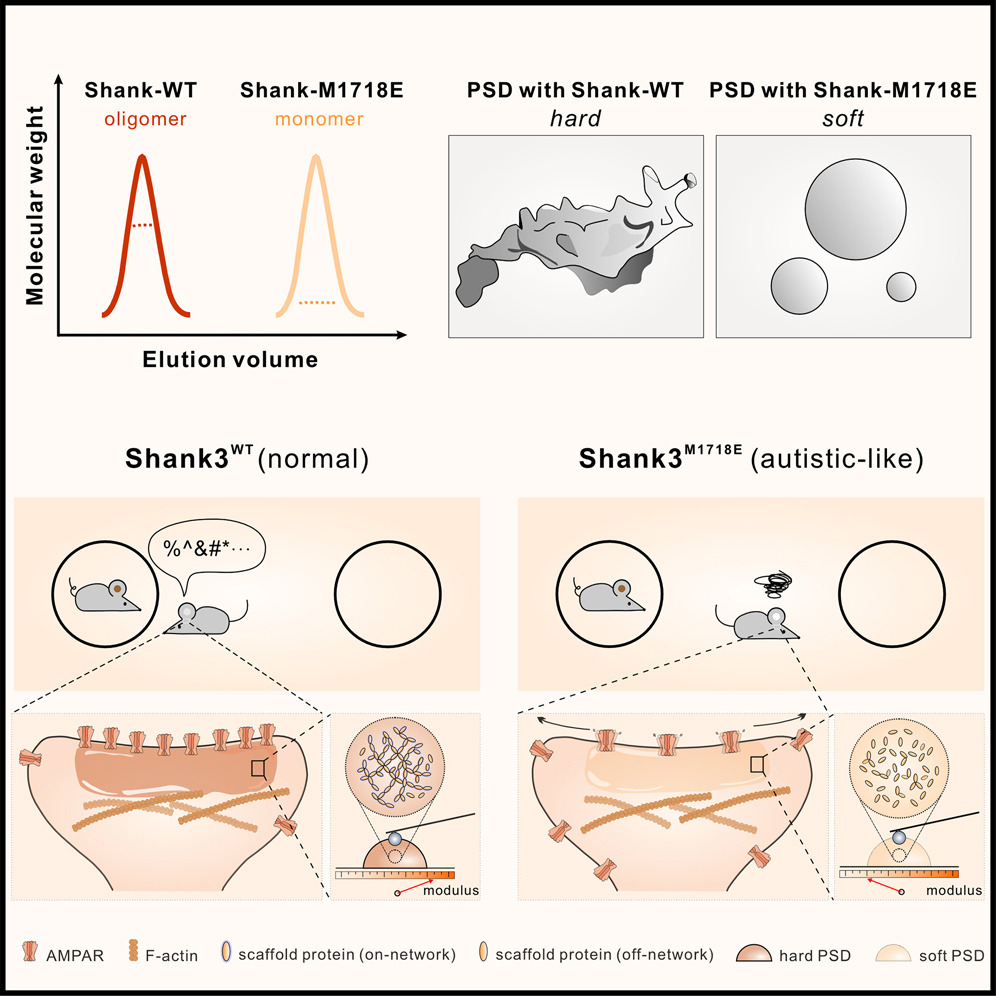New targets and designed inhibitors of ASAP Arf-GAPs derived from structural characterization of the ASAP1/440-kD ankyrin-B interaction
2024.10.08Li Y, Zhao Y, He Y, ..., Zhang, M,et al. [J]. Journal of Biological Chemistry, 2024, 300(10): 107762.
ASAP1 and its paralog ASAP2 belong to a PI4,5P2-dependent Arf GTPase-activating protein (Arf-GAP) family capable of modulating membrane and cytoskeletal dynamics. ASAPs regulate cell adhesive structures such as invadosomes and focal adhesions during cell attachment and migration. Malfunctioning of ASAP1 has been implicated in the malignant phenotypes of various cancers. Here, we discovered that the SH3 domain of ASAP1 or ASAP2 specifically binds to a 12-residue, positively charged peptide fragment from the 440 kDa giant ankyrin-B, a neuronal axon specific scaffold protein. The high-resolution structure of the ASAP1-SH3 domain in complex with the gAnkB peptide revealed a noncanonical SH3-ligand binding mode with high affinity and specificity. Structural analysis of the complex readily uncovered a consensus ASAP1-SH3 binding motif, which allowed the discovery of a number of previously unknown binding partners of ASAP1-SH3 including Clasp1/Clasp2, ALS2, β-Pix, DAPK3, PHIP, and Limk1. Fittingly, these newly identified ASAP1 binding partners are primarily key modulators of the cytoskeletons. Finally, we designed a cell-penetrating, highly potent ASAP1 SH3 domain binding peptide with a Kd ∼7 nM as a tool for studying the roles of ASAPs in different cellular processes.
- Recommend
-
2025-10-22
IQSEC2/BRAG1 may modulate postsynaptic density assembly through Ca2+-induced phase separation.
-
2025-08-22

Shank3 oligomerization governs material properties of the postsynaptic density condensate and synaptic plasticity.
-
2025-08-21
Modulating synaptic glutamate receptors by targeting network nodes of the postsynaptic density condensate.
-
2025-08-19
Current practices in the study of biomolecular condensates: a community comment.
-
2025-06-10
Phase separation instead of binding strength determines target specificities of MAGUKs.

